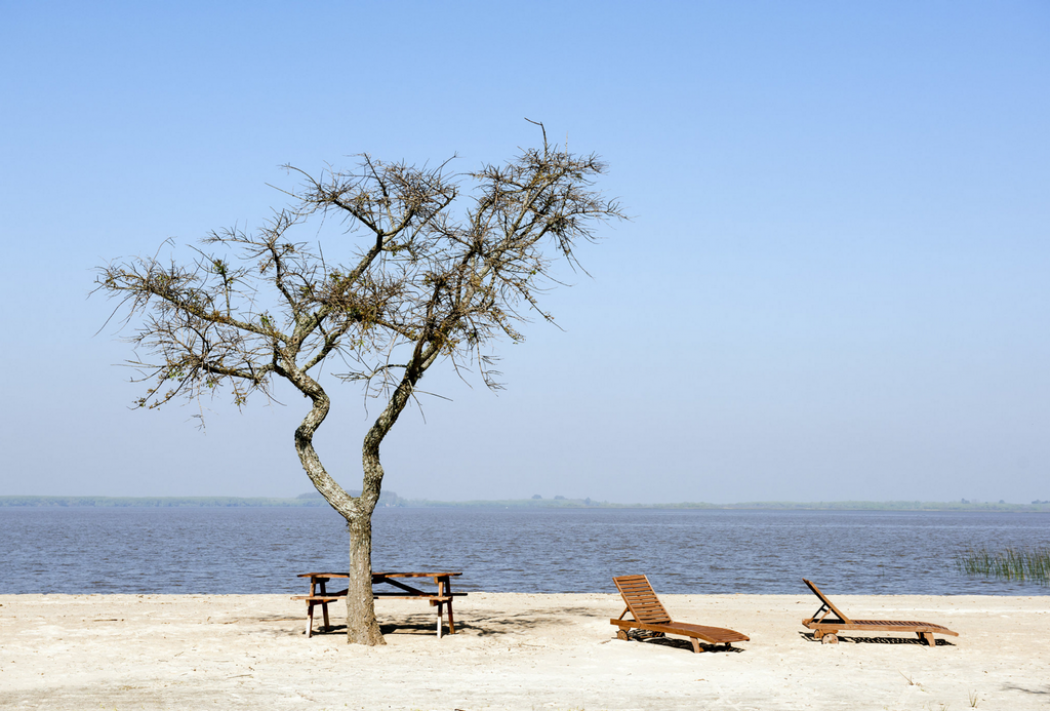Our first lunch was laid out like a last supper. There, in the middle of a vineyard, underneath a billowing white cotton tent, a long wooden table had been set up, every inch of it covered with platters of food. There was the stuff you might expect at a picnic: bread, homemade and chewy; wedges of various cheeses arranged on wooden cutting boards; paper-thin slivers of prosciutto and salami. Then there were the local specialties — bowls of creamy spinach dip, stacks of freshly baked empanadas, stuffed with tuna and still steaming. And finally the wine, bottles of the heavy stuff this area was famous for and what brought us here in the first place.
We were eight that afternoon — my friends and I; our hosts Diego Vigano, his wife, Maria, and his father, Mauro Galeazzo; and, scampering around somewhere, Coco, the cherubic 2-year-old who had the run of the place. The setting was Posada CampoTinto, a gorgeous five-room boutique hotel set on a sprawling hill deep in the wine country of South America. It had taken an overnight flight (to Buenos Aires), an hour in a car (to the port), and three hours on a ferry across the Río de la Plata that separated us from Argentina. But as I took my seat next to Mr. Galeazzo, a dashing Italian gentleman of 87, I forgot my fatigue and concentrated on not stuffing all the food into my face at once.
A vineyard in the Carmelo area. Credit Matilde Campodonico for The New York Times
“Welcome to Uruguay,” said Mr. Vigano de Narvaez, raising his glass and looking around the table. “Our population just went up since you arrived!”
Uruguay has made some news lately — all of it indicative of a country that wants you to enjoy yourself. First, Uruguay beat out Argentina as the highest per capita consumer of beef, a real victory for the smaller country in this meat-loving part of the world. Last year, The Economist named Uruguay Country of the Year, partly for legalizing same-sex marriage and partly for becoming the first country to legalize the production and the sale of marijuana, saying that those actions have “increased the global sum of human happiness at no financial cost.”
Sitting in the middle of the vineyard, surrounded by songbirds and a light breeze, it was hard not to feel the sum of human happiness in ways entirely unrelated to federal legislation. We were there to explore a nascent scene of great wine being made and the kind of easygoing, grass-roots vibe that comes from small communities birthing their own tourism industry.
This locus of Uruguayan wine country, though not the largest in this small nation, has been producing wine for generations — but has only recently gained attention as much for its wine as for being an awfully nice place to visit. It’s centered around the dusty old town of Carmelo, about 150 miles northwest of the capital of Montevideo and just across the Río de la Plata from Argentina. It’s a place of grassy roads, fields of grazing cattle, and hillsides of pale green vineyards. Wildflowers carpet the land and rosemary and lavender plants grow to be the size of small Fiats. It’s Tuscany in miniature.
Continue reading the main story
The eight vineyards around Carmelo comprise about 1,000 acres, making the area slightly smaller than Uruguay’s biggest wine regions, which are outside Montevideo and Canelones. “Uruguay produces less than 100 million liters of wine every year, which means our entire country produces as much as one large winery in Argentina,” said Juan Andres Marichal, vice president of the National Wine Institute of Uruguay. “Our wineries aren’t big corporations. They are small and run by families.” If Argentina is the continent’s wine Goliath, Uruguay may be on its way to being its David — a formidable opponent. And a huge part of its appeal and success may be that it’s small and accessible.
We started early the next day. I met my friends (Lisa, who traveled with me from the States, and Astrid and Matias, who joined up with us in Argentina) on the terrace of CampoTinto for a breakfast of cheese, ham, toast and yerba mate, or simply mate (pronounced MAH-tay), which tastes like green tea if you added bitterness and removed joy. Calling it an acquired taste is generous, and yet it’s as popular in Uruguay and Argentina as steak. Mate is served in cups that look like hollowed-out gourds lined with silver, and Astrid and Matias drank theirs through a stainless steel pipe slash straw contraption. It is a beautiful, methodical, centuries-old tradition, and after one sip, I wanted no part of it.
“NYTimes.com”
Sept. 11, 2014


